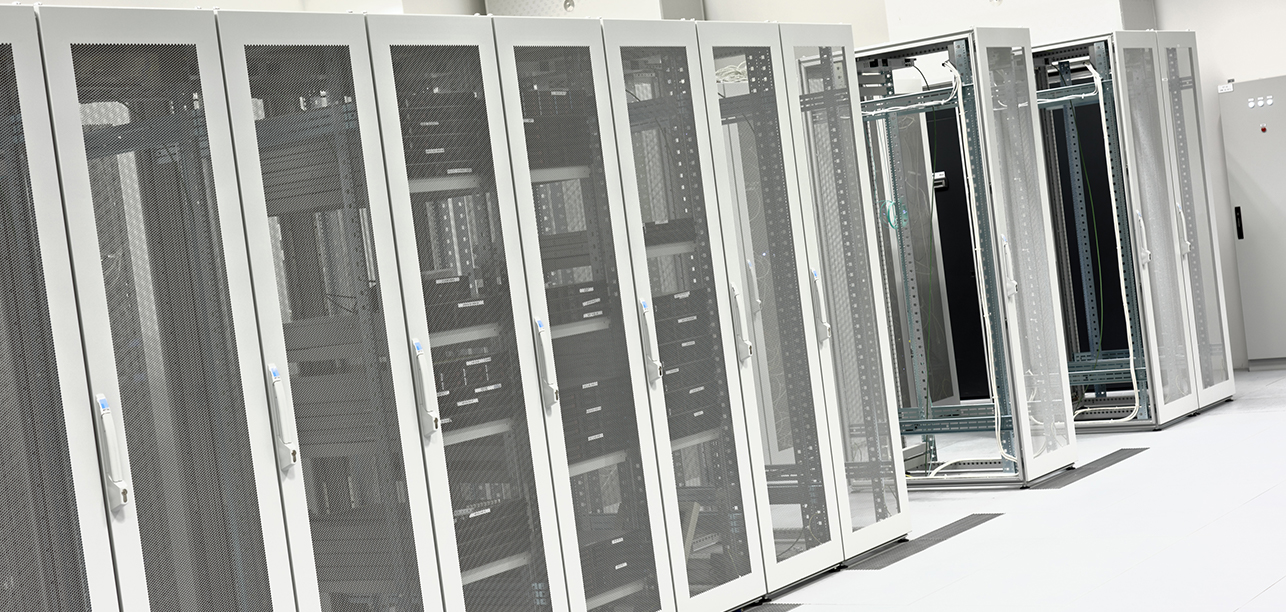Month: December 2011

What do the downfall of Osama Bin Laden and the discovery of new pyramids have in common?
 With 2011 almost over, many are taking time to reflect.
With 2011 almost over, many are taking time to reflect.
We all remember when the world was held captive by the news after U.S. forces brought down Osama Bin Laden last May. Also this year, though perhaps not quite as publically known, but nonetheless still thrilling, 17 previously undetected pyramids and more than 1,000 tombs were discovered in the Egyptian desert.
While these two events might not appear to relate, to a geosciences company like ours, NEOS GeoSolutions, their common denominator is quite fascinating. While others were engrossed with the details of the Bin Laden ambush, we were particularly excited about the use of hyperspectral imaging that U.S. Navy Seal Team 6 used to scope out the target.
Reflection of the sun’s energy by any material creates a unique fingerprint, known as a “spectral signature” for that material. In both of these incredible situations, hyperspectral imaging allowed the viewer to see what the naked eye could not. NEOS also uses hyperspectral systems in its programs and can identify natural resources by searching the earth’s surface for telltale spectral signatures such as minerals or hydrocarbons.
As a result of using these systems, we face a challenge each and every day — storing and working with huge amounts of data such as [self-acquired] hyperspectral data and the complex geo-programs used to interpret it. When dealing with large amounts of data and farms of compute clusters, it is imperative that it is hosted from a primary location, Internap’s colocation facility in Santa Clara, CA, to allow for more efficient processing and faster project completion across various corporate offices. Combine this location with state-of-the-art security, 100% uptime and a bevy of other benefits, and NEOS can focus its attention on what it does best — acquiring and simultaneously interpreting multiple geological, geophysical and geochemical data sets to identify hydrocarbons and minerals in the subsurface.
As we enter into 2012, NEOS will continue to work to collect and interpret Hyperspectral data but will also look forward to witnessing more global feats, accomplishments and advancements, all at the hands of seriously interesting Hyperspectral imaging.
About our guest blogger: Courtney Ford joined NEOS GeoSolutions after spending two years living in Madrid, Spain. While in Madrid she co-created a thriving website called Guiri Guide whose Madrid, Paris and Prague editions are designed to serve the ‘youthful expatriate.’ Courtney has extensive experience as a marketer in the oil field services industry and is a guest blogger for Internap.
Explore HorizonIQ
Bare Metal
LEARN MORE
Stay Connected

 Not all providers are created equal. When searching for a colocation partner, there are key questions you will want to ask to make sure the provider meets your basic needs as well as your unique business requirements. Use this list to get the ball rolling and to ensure you choose a colocation provider you can stick with over the long haul.
Not all providers are created equal. When searching for a colocation partner, there are key questions you will want to ask to make sure the provider meets your basic needs as well as your unique business requirements. Use this list to get the ball rolling and to ensure you choose a colocation provider you can stick with over the long haul.
- How close to your company’s office building is the provider’s facility? Is it within driving distance so that your company’s IT staff can easily get to the building? Does your business need a facility that’s close to a major airport?
- If your company has offices in several locations, can you consider a facility in a less expensive real-estate market? Is the provider geographically diverse? Do they have facilities in other cities or abroad?
- Is the provider’s colocation facility in a place with few natural threats, such as hurricanes? If so, what kind of precautions has the provider taken to protect the data center (and your business) from these threats? Are they structurally sound? A provider in California, for instance, should have seismically engineered each facility to withstand earthquakes.
- What kind of security is in place? Are there biometric scanners, on-site security and video surveillance?
- Is the provider carrier-neutral, or is it carrier-specific? A carrier-neutral colocation provider will let your company connect to a variety of carriers’ networks, while a carrier-specific provider will lock you in to just one carrier.
- Does the provider offer a wide array of value-added services? Are services like cloud or managed hosting available in case your needs change in the future? What about remote services or managed installations?
- How strong is the SLA? What is the level of availability? Does the provider offer proactive credits for SLA violations?
- Is the facility audited by a third party? Is it SAS 70 compliant or is there a SOC 2 report available? How often is the facility audited?
- Is this a premium provider or a cost leader? Are you willing to sacrifice performance and support for price reductions? Are there any hidden fees outside of the agreement?
- How scalable is the facility? Is there enough space to grow? Do they offer high density configurations?
- Is there technical support available when you need it and what level engineer will you speak to when you call the Network Operations Center (NOC)?
- How comfortable is the work environment for your technicians? Are there customer lounges or work space?
- Is the provider green? Are they looking for ways to address sensitivity to the environment?
Want to know more about how to choose the right colocation partner for your business? Download the Colocation Buyer’s Guide eBook for other tips, ROI facts and more.
Explore HorizonIQ
Bare Metal
LEARN MORE
Stay Connected

 Recently I was shopping online for a new laptop that would satisfy even the most demanding technophile. I found several sites frustrating because their content loaded slowly and unevenly. I wondered why these sites didn’t employ any of the various Website Performance Optimization (WPO) technologies available today that can solve these problems.
Recently I was shopping online for a new laptop that would satisfy even the most demanding technophile. I found several sites frustrating because their content loaded slowly and unevenly. I wondered why these sites didn’t employ any of the various Website Performance Optimization (WPO) technologies available today that can solve these problems.
It’s important to understand that web content displayed on most websites can be categorized into cacheable and un-cacheable. Likewise, there are two WPO technologies that can be applied to each. Cacheable content (mostly static) can be served either from the application server at the origin or from the edge server utilizing a technology called a Content Delivery Network (CDN). The idea behind a CDN is to move the content closer to the user by loading it on a network of geographically-distributed servers (the edge of the network). This allows content to be delivered more efficiently from a server located close to the user rather than from one where the website actually resides. In essence a CDN acts like the cache in a computer, which ensures that data commonly sourced by the user is available upon request.
By definition, dynamic content is un-cacheable since it is generated on demand. Dynamic content must be served from the application server located at the origin, and therefore unlike static content, does not lend itself to being accelerated by a CDN. This is where TCP acceleration becomes very useful. Since latency between the origin server and the user is generally much greater than between the edge server and the user, TCP acceleration is able to produce measurable acceleration results by improving the throughput rate. It’s also important to know that TCP acceleration can be delivered as a service or by an appliance. The Acceleration-as-a-Service method is generally more flexible and economical than acceleration via an appliance. It also serves a slightly different use case by targeting companies whose user base is distributed rather than collected in a remote office, as would be the use case for an appliance.
Want to make sure your online buyers don’t experience the same frustration? Download our IP Buyer’s Guide eBook to learn more about WPO technologies and how they can enhance your Internet performance.
Explore HorizonIQ
Bare Metal
LEARN MORE
Stay Connected

Recently I noticed my two-year-old daughter had learned how to scan through pictures on my wife’s iPhone with great ease by dragging her finger across the touch-screen. Yes folks, I’m here to tell you the mobile revolution is here for all ages. What’s more is people are now expecting all their content (including live video) to be available on their mobile devices.
Nielsen reports that 40% of adult U.S. mobile phone owners currently have a smartphone1, while IMS Research expects that by 2016 smartphones sales will rise by one billion units and comprise half of the mobile handset market2. As mobile devices continue to proliferate the market, businesses must support content delivery across mobile platforms such as iPhone OS, Android and Windows. The question is how do you do this quickly and easily?
Internap recently launched its CDN service for live and Video On Demand (VOD) video streaming to all mobile devices types, including Apple and Android. A CDN service like ours can provide “publish once” capabilities to convert a single file for viewing on multiple devices, streamlining the process and giving content developers the opportunity to reach audiences anywhere.
If customers aren’t already asking for content delivery on their phones or tablets, they soon will be. My two-year-old can already say “Elmo on TV please,” so I can imagine it won’t be long before she asks for “Elmo on phone please.”
References:
140 Percent of U.S. Mobile Users Own Smartphones; 40 Percent are Android
2Global Smartphones Sales Will Top 420 Million Devices in 2011, Taking 28 Percent of all Handsets, according to IMS Research Date: 27 July 2011.
Explore HorizonIQ
Bare Metal
LEARN MORE
Stay Connected

Last night, Internap unveiled our next-generation Dallas data center in the heart of the Texas high-tech Silicon Prairie. Our Dallas colocation facility provides customers with data center space that can be tailored to their specific needs with resilient infrastructure that supports 55,000 square feet of high power density raised floor.
The Dallas data center event was made truly exciting by the presence of Roger Staubach, one of the finest quarterbacks in NFL history, not to mention an accomplished business and civic leader. Mr. Staubach captivated the Dallas colocation crowd with stories from his Dallas Cowboys glory days where determination and attitude could turn around any game and even a challenging season.
We were also honored to have the Mayor of Plano, Phil Dyer, join us for the event and assist in the Dallas colocation and data center facility ribbon cutting ceremony. We are proud to be part of this community and look forward to building long lasting relationships by providing intelligent IT Infrastructure solutions to our customers and anyone looking to grow in the Dallas data center market.
More about our Flagship Dallas Data Center
Our Flagship Dallas data center is located at 1221 Coit Road, Plano, TX 75075. This Dallas colocation data center connects to Atlanta, Silicon Valley, Los Angeles, Phoenix, Chicago and Washington, D.C. data centers via our reliable, high-performing backbone. Our carrier-neutral, SOC 2 Type II Dallas data center facilities are concurrently maintainable, energy efficient and support high-power density environments of 20+ kW per rack. If you need colocation Dallas services, or other data center solutions in the Dallas-Fort Worth metroplex, contact us.
Explore HorizonIQ
Bare Metal
LEARN MORE
Stay Connected

Yesterday, we hosted a webinar entitled “Top 5 mistakes not to make in the cloud.” Paul Carmody, our SVP of Business Development & Product Management, discussed the pitfalls that could be encountered when navigating the road to the cloud.
What are they you ask?
- MISTAKE #1: Leaping before you look – cloud is a means to an end. Ultimately you want happy end-users while at the same time meeting your security, compliance, and performance requirements.
- MISTAKE #2: Thinking you have found “the one” – your relationship with a cloud provider is not like a marriage. You may want to change providers later on. You should consider API’s, images and data needs and the ease to make changes.
- MISTAKE #3: If it fits, it ships – don’t make the assumption that every cloud supports your most complex applications. How many layers do you need between tiers? Do you need specialized networking devices in the configuration?
- MISTAKE #4: Believing tomorrow will be like today – cloud may be what you need today. But, it is very likely it will not be the only solution you will need down the road. Your business and application needs may require multiple IT Infrastructure services, including colocation, managed hosting or hybrid options combining multiple services.
- MISTAKE #5: Not leveraging the full potential of the cloud – the cloud opens up endless possibilities. Make sure you take advantage of those. For example, are you optimizing your VMs for the cloud? Are you fully leveraging the on-demand aspect of the cloud to support the “bursty” parts of your application?
Explore HorizonIQ
Bare Metal
LEARN MORE
Stay Connected

Recently, I was catching up with a friend who heads a large-business shared services group. The group is keenly focused on driving efficiencies and providing services that span multiple business units.
He wanted to know all about “the cloud;” what it was, what it wasn’t, how businesses are taking advantage of it and where are the risks. After our discussion he came to the conclusion that the cloud was simply another shared service. It can be leveraged by multiple groups and could be a common service that when properly deployed, can drive real efficiencies.
And guess what, he’s right! We technologists spend a lot of time and tend to over-complicate the notion of the cloud using a technospeak to describe what it is and what the benefits are. If we really consider the cloud in its simplest terms and with more of a business benefits view, it is another shared service. Business units can share, re-use and deploy all while consuming the same assets or a common approach. Efficiencies can be derived by driving the utilization of the assets to higher levels, minimizing capital expenditures, focusing resources on activity that truly add value and only consuming what is needed and when.
As more business leaders explore the options and benefits of using the cloud, we need to ensure we’re speaking a language the business can understand and in a way that highlights where the cloud can have a direct benefit to the business.
To learn more about cloud and some mistakes to avoid when implementing, check out The Ins and Outs of Cloud Migration
Explore HorizonIQ
Bare Metal
LEARN MORE
Stay Connected

Commoditization is a word that most service providers don’t want to hear. It’s generally insulting to be viewed as undifferentiated from the rest. Zebras, I think, find this maddening (see Marty’s identity crisis in Madagascar 2). Unfortunately, it is a word being thrown around relative to the data center business a lot these days.
I have, however, ultimately come to the conclusion that the commoditization of the data center is a reality. Certainly, I can and will argue that how you assemble or configure the underlying infrastructure is important. I’ll also argue that there are varying degrees of quality in the underlying infrastructure. And I’ll further argue that how you maintain that infrastructure is very material. (I do like to argue.) But what I can’t really argue is that abstractly one N+1 facility is better than another. (I suppose I would still argue it just to see if you’re paying attention.)
What commoditization has done to the outsourced data center business is rather interesting. Because the underlying data center has become less and less differentiated over time (subject to the points above that are still relevant), the commoditization of the data center has led service providers overall to evolve, differentiate and tune the final solution to the target audience more than ever before. Colocation providers have been able to focus on just-in-time, enterprise solutions heavy on service and flexibility. Wholesale data center offers have developed to provide a larger scale, lower cost solution with fewer services to fit the needs of many former DIY insourcers. The solutions available in and coming to market have created a very exciting time to be a consumer of data center services. This also means it’s a pretty exciting time to be a data center service provider.
If you don’t believe me, come visit us at our Dallas Open House. I’ll be happy to show you how commoditization of the data center has allowed Internap to craft the best colocation product in the market. And why this product could be the best thing to ever happen to your business.


